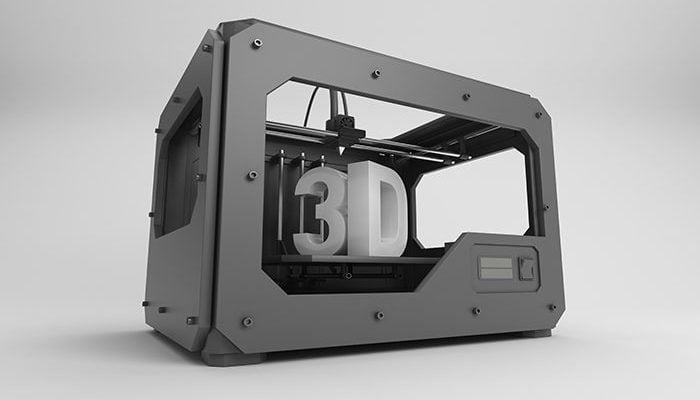Can 3D printing solve the pain points of spare parts logistics?
Jun 08, 2017 • Features • 3D printing • Tim Helsen • UPS • Parts Pricing and Logistics
There has been consitent talk about the role of 3D printing could play in field service logistics and spare parts management for many years now but still we have yet to see a clear solution arrive using the technology. Kris Oldland talks to Tim Helsen, UPS to see if it is on the horizon and if so how will it work and what benefits will it bring...
KO: 3D printing has for a while been positioned as a major disruptive technology within supply chain management, but can it really be a magic bullet to help field service companies meet the challenge of getting parts to their engineers in a more timely fashion?
TH: At UPS we see two potential areas for using additive manufacturing in field service operations and spare part supply.
Firstly, 3D printing has the potential to be used for a more tailored part supply based on customer needs at any given moment in time. In particular for older machines where spare parts are not on high demand and the moulders that were used for mass production are not available anymore. In situations such as this, spare parts can be created through additive manufacturing at a relatively low cost and supplied to the engineer in a short amount of time.
A broader use of 3D printing technology can be imagined in situations where the manufacturer is making adjustments to a certain part based on data collected from the field.
Furthermore, if manufacturers only stock high demand items and switch to 3D printing technology for low demand items, they can significantly reduce their overall inventory levels and operating costs.
KO: What are the challenges and benefits for a field service organisation to adopt 3D printed parts as part of their spare part management strategy?
TH: The key benefit is that field service organisations can tailor spare parts according to the needs of their customers and thereby improve customer satisfaction and loyalty levels. The key challenge for field service organisations will be to make the financial investment and accumulate the knowledge and the expertise to switch from traditional manufacturing to 3D printing.
UPS has integrated 3D printing facilities into its global network and built up expertise in additive manufacturing, so our customers do not have to.
KO: There are numerous examples of high quality 3D printed parts being used in industrial products, but realistically with today’s technology and infrastructure are 3D printed parts a valid solution in terms of spare parts management for field service companies?
TH: Despite 3D printing’s current shortcomings in some field service situations (parts made from several components, large or complex parts that take a long time to print,..), UPS offers field service providers value because we combine an on-demand 3D printing manufacturing network at central air hub locations with a global logistics network. Together, they form an on-demand economy business, allowing for asset-light operations if you are a field service company.
KO: Do you think 3D printing solutions will become a standard tool offered by major logistics providers (such as FedEx, UPS, K&N etc) or do you think it will remain a specialist sector?
TH: 3D printing is going mainstream. And as it does, the technology is likely to revolutionise traditional manufacturing and redefine our notion of supply chain logistics.
3D printing is going mainstream. And as it does, the technology is likely to revolutionise traditional manufacturing and redefine our notion of supply chain logistics.
We partnered with a 3D printing company to build a 3D printing facility at our global Louisville hub and in 2016 began offering this service in Asia too, with scope for further expansion.





















 Field Service News is published by 1927 Media Ltd, an independent publisher whose sole focus is on the field service sector. As such our entire resources are focused on helping drive the field service sector forwards and aiming to best serve our industry through honest, incisive and innovative media coverage of the global field service sector.
Field Service News is published by 1927 Media Ltd, an independent publisher whose sole focus is on the field service sector. As such our entire resources are focused on helping drive the field service sector forwards and aiming to best serve our industry through honest, incisive and innovative media coverage of the global field service sector.
Leave a Reply